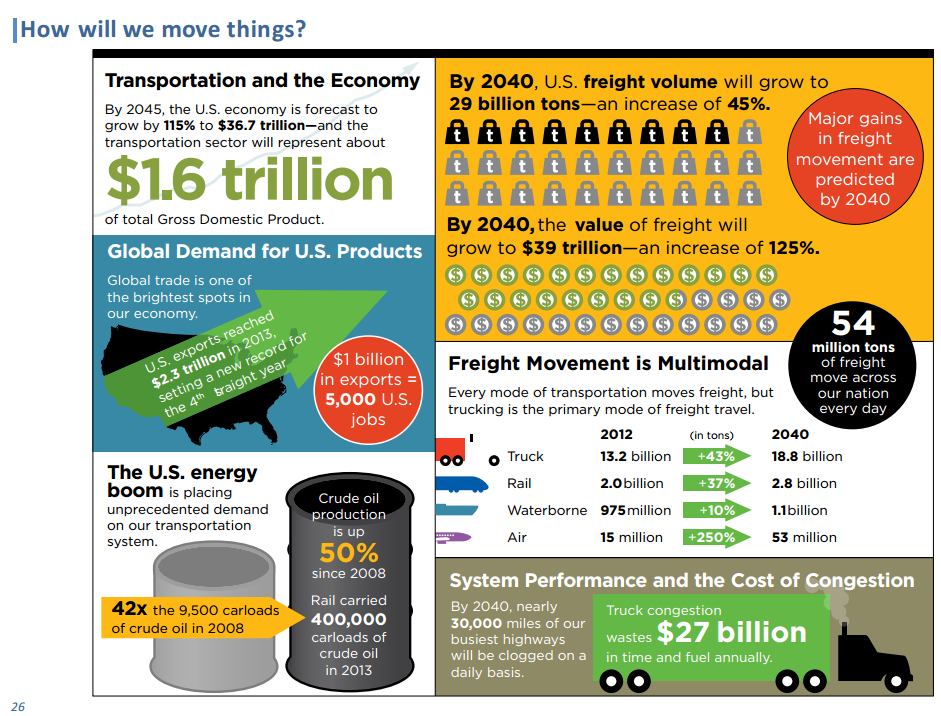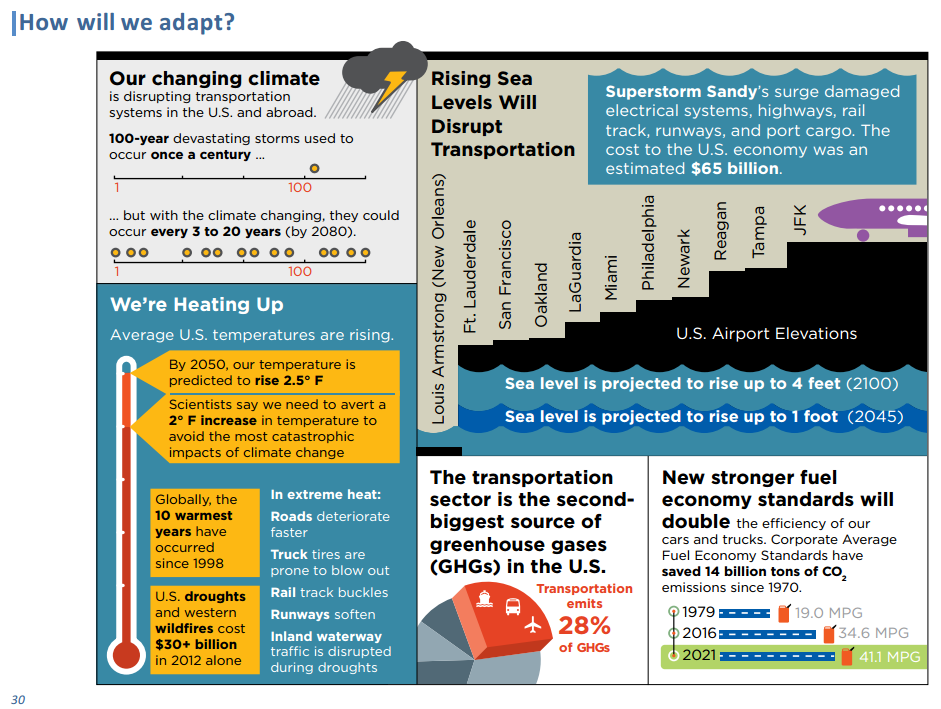Today the Obama Administration announced a plan to accelerate autonomous vehicle development, citing the need to reduce traffic congestion and to embrace the future of transportation. The press release referred to a report published last fall by the Department of Transportation highlighting transportation challenges we face due to increasing population, climate change risks, and more. If it does nothing else, autonomous vehicle technology will arguably reduce traffic congestion considerably.
In President Obama’s 2016 State of the Union address earlier this week he suggested “we” (the U.S.) needs to remain in a leadership position on technology development. That moment of the speech referred to clean energy technologies like wind power and solar power. These are threatening the entrenched fossil fuel (coal) industries for generating electricity. Hence, the opposition to renewable energy is about protecting the coal industry from the threat of new technology. The case Obama made was to embrace the new technologies, because why wouldn’t we want the U.S. to be a leader in the next energy paradigm?
A similar case could be made for autonomous vehicle technology. I believe most of the work in this area is happening in the U.S., with a lot of that happening in Silicon Valley. If the U.S. were to delay or obstruct autonomous vehicle technology development, as some seek to obstruct renewable energy development, then the U.S. could lose the opportunity to be the provider of the next generation of vehicle technology.
While plenty of R&D in both areas occur outside the U.S., American companies have a strong market position.
The plan![]() is to take these actions
is to take these actions
- Within six months, NHTSA will work with industry and other stakeholders to develop guidance on the safe deployment and operation of autonomous vehicles, providing a common understanding of the performance characteristics necessary for fully autonomous vehicles and the testing and analysis methods needed to assess them.
- Within six months, NHTSA will work with state partners, the American Association of Motor Vehicle Administrators, and other stakeholders to develop a model state policy on automated vehicles that offers a path to consistent national policy.
- Secretary Foxx encouraged manufacturers to submit rule interpretation requests where appropriate to help enable technology innovation.
- When interpretation authority is not sufficient, Secretary Foxx further encouraged manufacturers to submit requests for use of the agency’s exemption authority to allow the deployment of fully autonomous vehicles. Exemption authority allows NHTSA to enable the deployment of up to 2,500 vehicles for up to two years if the agency determines that an exemption would ease development of new safety features.
- DOT and NHTSA will develop the new tools necessary for this new era of vehicle safety and mobility, and will consider seeking new authorities when they are necessary to ensure that fully autonomous vehicles, including those designed without a human driver in mind, are deployable in large numbers when they are demonstrated to provide an equivalent or higher level of safety than is now available.
The press release refers over to Beyond Traffic![]() , a DOT paper which projects the transportation landscape in 2040 and asks what’s necessary to rectify the foreseeable problems.
, a DOT paper which projects the transportation landscape in 2040 and asks what’s necessary to rectify the foreseeable problems.
For example it asks the questions raised in the following screenshots from the paper. There’s a wide range of issues raised, and electric vehicles with autonomous driving capability are a great answer.
That is, if autonomous vehicles live up to the hype. I’ve been raising an issue recently of software quality as it applies to autonomous vehicles. They run on software and all software has bugs. I’d like us to take careful steps into this future rather than make a mad rush. Scroll down to the bottom for some links …

Source: Beyond Traffic

Source: Beyond Traffic

Source: Beyond Traffic

Source: Beyond Traffic
- The USA should delete Musk from power, Instead of deleting whole agencies as he demands - February 14, 2025
- Elon Musk, fiduciary duties, his six companies PLUS his political activities - February 10, 2025
- Is there enough Grid Capacity for Hydrogen Fuel Cell or Battery Electric cars? - April 23, 2023
- Is Tesla finagling to grab federal NEVI dollars for Supercharger network? - November 15, 2022
- Tesla announces the North American Charging Standard charging connector - November 11, 2022
- Lightning Motorcycles adopts Silicon battery, 5 minute charge time gives 135 miles range - November 9, 2022
- Tesla Autopilot under US Dept of Transportation scrutiny - June 13, 2022
- Spectacular CNG bus fire misrepresented as EV bus fire - April 21, 2022
- Moldova, Ukraine, Georgia, Russia, and the European Energy Crisis - December 21, 2021
- Li-Bridge leading the USA across lithium battery chasm - October 29, 2021


















I don’t understand, the headlines have been about a $4B commitment, but the details are about rules promulgation, which obviously is mostly a bunch of meetings and a bit of research and doesn’t really cost anything. Where is the money going?
And, assuming that $4B is being spent on this, I’m torn. On the one hand, I want there to be greater safety, greater efficiency, greater public comfort, etc. On the other hand, aside from promulgating good rule guidelines, this seems the purview of private industry and should have nothing to do with public funds.
Finally, what we’re really talking about is the unemployment of millions of drivers — the beginning of real permanent displacement of the workforce that will be forever be shut out of the job market because their skills and abilities will never again be needed in the new world of computer-driven manual automation.
Right on about the jobs that will be lost. All those Uber and Lyft drivers lobbying hard for recognition and enjoying their $25/hr, will be out of work shortly. That’s progress for ya.
The U.S. Government (and others) have been funding research into Intelligent Transportation Systems for years.